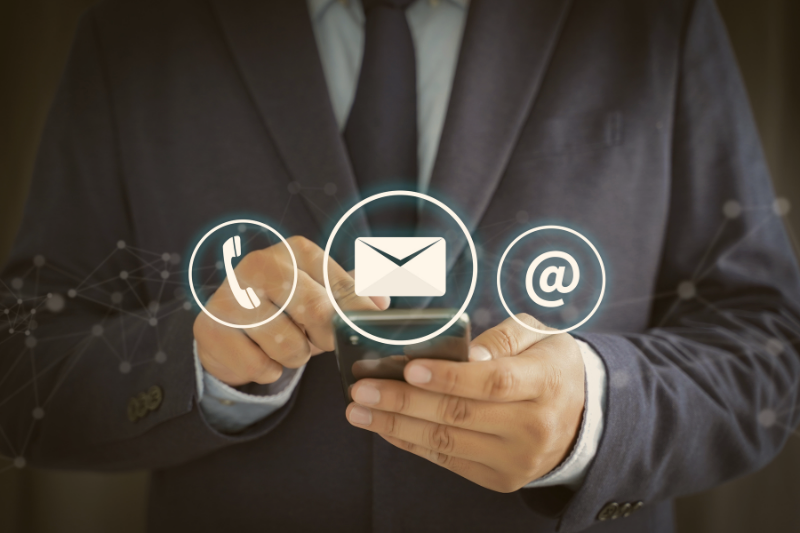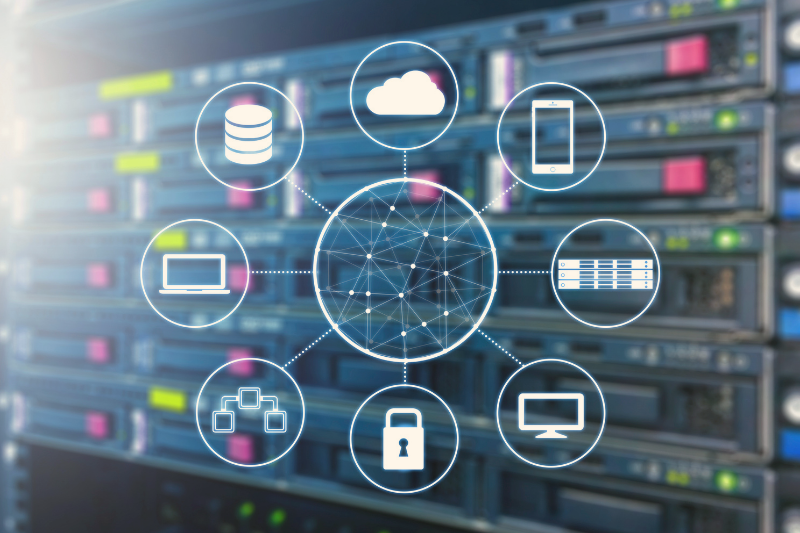Every day, thousands fall victim to phishing attacks—and in 2024, these attacks have become more sophisticated than ever.
Cybercriminals are increasingly targeting users by crafting realistic-looking emails and websites in an attempt to steal sensitive information.
Especially with the rapid advancement of artificial intelligence technologies, detecting phishing attacks is becoming more difficult. However, with the right knowledge and precautions, it’s entirely possible to protect yourself from these threats.
In this guide, we will thoroughly examine the characteristics of modern phishing attacks, how to detect them, and how to protect yourself. You’ll also learn about preventive measures at the corporate level and how to educate your employees effectively.
Key Characteristics of Phishing Attacks
Advances in AI are fundamentally transforming the nature of phishing attacks. One particularly alarming trend is the significant increase in the sale of AI-based phishing tools on the dark web.
Evolution of Modern Phishing Techniques
Voice phishing (vishing) attacks have surged by over 550% recently. Meanwhile, the use of artificial intelligence and large language models (LLMs) has automated these attacks, escalating the threat level.
Cybercriminals are now developing AI-powered tools to conduct targeted phishing campaigns. These tools can automatically gather information about victims and generate convincing messages.
Most Common Types of Phishing in 2024
Email-based attacks
Voice phishing (vishing)
Targeted phishing (spear phishing)
A striking point: 90% of data breaches result from phishing attacks. According to the FBI, these attacks cause more than $500 million in damages annually.
Target Audiences and Sectors
Business professionals are now prime targets for cyber scammers. Studies show that more than three-quarters of respondents see targeted phishing attacks as the greatest cybersecurity threat.
Tech giants like Microsoft are among the most impersonated brands in phishing attempts. In fact, Microsoft’s identity is used in nearly half of all impersonation-based attacks.
The global shortage of cybersecurity experts (3.4 million open positions) makes many organizations vulnerable—especially small and medium-sized enterprises (SMEs).
How to Detect Phishing Attacks
Identifying phishing attacks is one of the most vital parts of digital security. Modern phishing tactics are far more sophisticated than traditional methods.
Signs of Suspicious Emails
Email-based phishing has been the most common scam technique since the 1990s. To spot a potential phishing email, look out for:
Spelling and grammar mistakes
Urgent or threatening language
Requests for personal or financial information
Unfamiliar links and file attachments
Also, inconsistencies between the sender’s email address and the claimed company can be major red flags.
How to Identify Fake Websites
Legitimate websites typically have clear, simple URLs. To recognize fake sites:
Examine the URL carefully: Look for tricks like “gmai1.com” instead of “gmail.com”.
Check the security certificate: Ensure a padlock icon is visible in your browser.
Assess content quality: Look for professionalism and consistency in design.
Verify contact information: Ensure that provided contact details are accurate and real.
Following these steps will help you distinguish real websites from fake ones more easily.
Spotting Social Engineering Tactics
Social engineering uses psychological manipulation to get individuals to reveal confidential information or perform risky actions. It often happens via phone and relies on tactics such as:
The principle of reciprocity
Commitment and consistency
Social proof
Authority
Likability
Scarcity
One tactic includes impersonating internal communication, such as fake help desk announcements about number changes.
Important note: No official institution will ever ask for your personal information via email. Avoid using unsecured public Wi-Fi for banking and other sensitive transactions.
Security Measures and Protection Methods
Cybersecurity professionals emphasize that the most effective defense against phishing attacks is implementing strong security measures. You should focus on three core areas to protect your digital assets.
Strong Password Management: The Key to Digital Security
Creating a strong password strategy is crucial to safeguarding your digital identity. Here are the core principles:
Length: Use at least 8 characters
Complexity: Mix uppercase/lowercase letters, numbers, and special characters
Originality: Avoid dictionary words
Avoid personal info: Stay away from birth dates, names, etc.
Diversity: Use different passwords for different accounts
Additional precautions:
Update your passwords regularly
Never share passwords via email
Following these simple yet effective practices will greatly improve your digital security.
Two-Factor Authentication (2FA)
Two-factor authentication adds an extra layer of protection against unauthorized access. Here’s how it works and why it matters:
How It Works:
First, you enter your usual password.
Then, you input a unique code sent to your phone or use a backup code.
Why It’s Important:
Even if your password is stolen, access becomes much harder.
Especially critical for email and banking accounts
Greatly reduces the risk of identity theft and online fraud
Using 2FA is a simple but powerful way to strengthen your digital defenses. Enable it wherever possible.
Importance of Modern Security Software
Antivirus and security software are your first line of defense against cyberattacks. Today’s advanced solutions offer:
Automatic detection of suspicious emails
Neutralization of malicious software
Website reputation checks
To boost cybersecurity:
Avoid unverified or pirated software
Keep your security tools up to date—this protects you against emerging threats
Avoid sensitive tasks on public Wi-Fi networks
Use secure, private networks for banking and personal data access
These steps will help protect your personal information and digital environment.
Digital Security Habits
Just like personal hygiene, cyber hygiene requires regular, intentional habits. Security in the digital world starts with your everyday practices.
Internet Safety Principles and Best Practices
Using the internet safely helps protect not only your data but also enhances your device’s performance. Antivirus software and firewalls are indispensable tools for maintaining digital health.
Essential Steps for Cyber Hygiene:
Keep systems and software up to date
Run regular virus scans
Ensure your firewall is always active
Avoid untrusted links
Golden Rules of Email Security
Email security is one of the most important components of digital safety. Remember: no legitimate institution will ever ask for your personal info via email.
To keep your email secure:
Use a unique, strong password different from your other accounts
Ignore emails from unknown or suspicious sources
Avoid clicking on shortened URLs in emails
Never click on links in suspicious messages
By following these rules, you can enjoy a safer online experience and stay protected against digital threats.
Enterprise-Level Phishing Defense
Protecting an organization from phishing requires a comprehensive strategy. Since 95% of cybersecurity breaches stem from human error, employee awareness is just as crucial as technical defense.
Importance of Employee Training
Security training is the backbone of corporate defense. Studies show a single malicious email opened by one employee can compromise the entire network. An effective training program should include:
Techniques to identify phishing emails
Safe online behavior guidelines
Skills to recognize potentially dangerous links
Awareness of social engineering threats
Most importantly: Training should be ongoing and systematic—not one-time. Regular updates and reinforcement keep employees alert and prepared.
Establishing Security Policies
Corporate defense against phishing requires clear rules and a strong technical infrastructure:
2FA systems provide double-layer protection
Centralized Password Manager (CPM) enhances password security
Privileged Session Manager (PSM) enables:
Session control
Action logging
Safe use of private protocols
Access auditing
Cybersecurity investment is especially critical for SMEs. A Cisco study shows phishing attacks targeting SMEs have increased by 13%.
For corporate network safety:
VPN usage should be mandatory
Employees should not access company data over unsecured Wi-Fi
Conclusion
As cybersecurity threats continue to evolve, staying alert against phishing attacks is absolutely vital. Strong passwords, two-factor authentication, and up-to-date security software form the core of your defense.
The rise of AI-powered phishing presents significant risks for both individuals and organizations.
Top protection tips:
Be cautious of suspicious emails
Avoid performing sensitive tasks over unsecured networks
Keep your security software updated
Provide employee training and implement strong corporate policies
These are the most effective defense methods against phishing threats.
At Synchron, we offer comprehensive solutions to protect your organization from cyber threats. Our advanced security software, two-factor authentication integrations, and employee training programs help safeguard your digital assets.
Contact us to minimize cybersecurity risks and build a robust defense system.
İletişim Bilgilerinizi Bırakın, Size Hemen Ulaşalım!
Synchron destek ekibine 7/24 erişebilir ve her sorununuza kısa süre içinde çözüm bulabilirsiniz.
Telefon: +90 216 978 81 91



